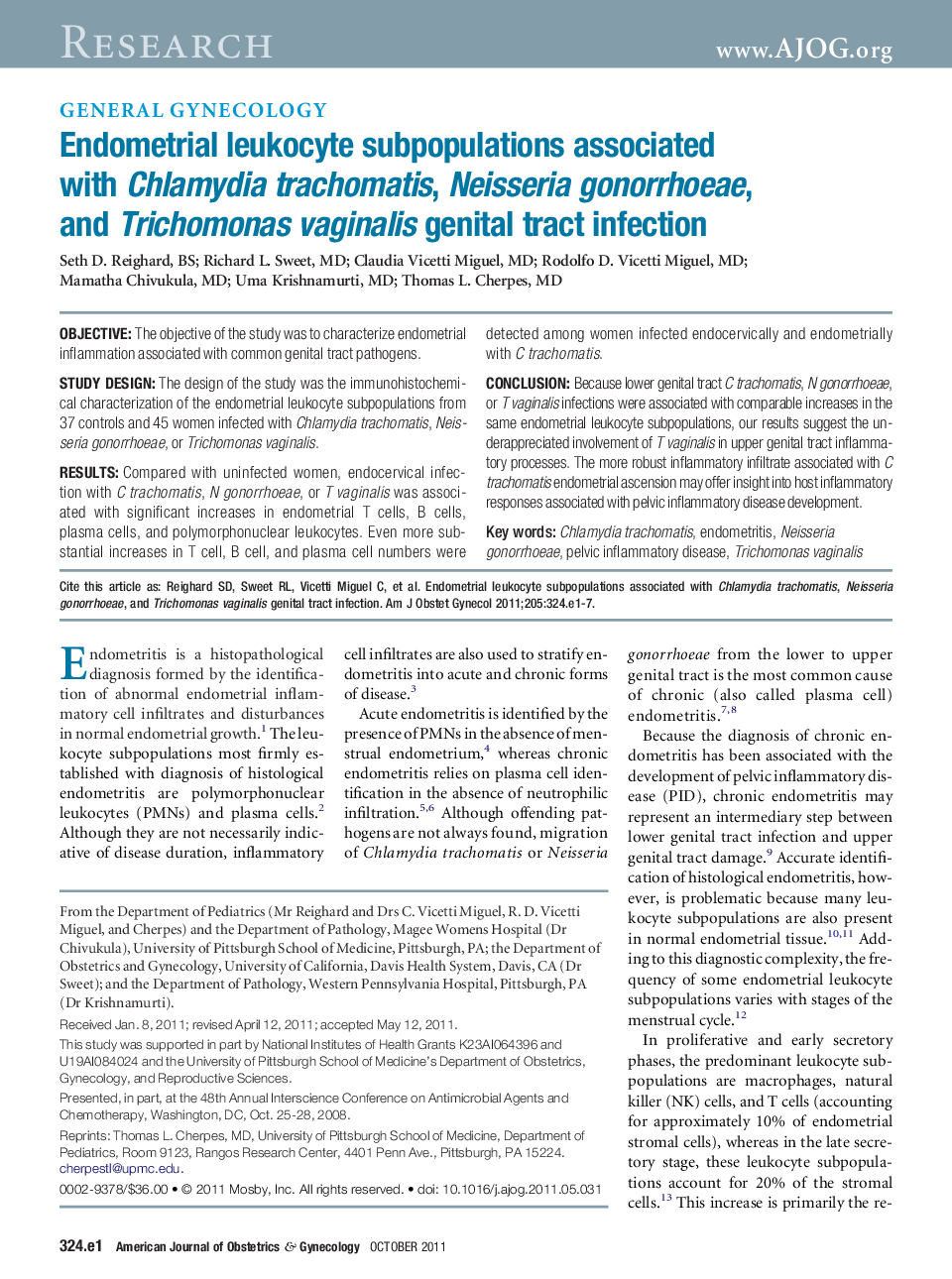| Article ID | Journal | Published Year | Pages | File Type |
|---|---|---|---|---|
| 6147291 | American Journal of Obstetrics and Gynecology | 2011 | 7 Pages |
ObjectiveThe objective of the study was to characterize endometrial inflammation associated with common genital tract pathogens.Study DesignThe design of the study was the immunohistochemical characterization of the endometrial leukocyte subpopulations from 37 controls and 45 women infected with Chlamydia trachomatis, Neisseria gonorrhoeae, or Trichomonas vaginalis.ResultsCompared with uninfected women, endocervical infection with C trachomatis, N gonorrhoeae, or T vaginalis was associated with significant increases in endometrial T cells, B cells, plasma cells, and polymorphonuclear leukocytes. Even more substantial increases in T cell, B cell, and plasma cell numbers were detected among women infected endocervically and endometrially with C trachomatis.ConclusionBecause lower genital tract C trachomatis, N gonorrhoeae, or T vaginalis infections were associated with comparable increases in the same endometrial leukocyte subpopulations, our results suggest the underappreciated involvement of T vaginalis in upper genital tract inflammatory processes. The more robust inflammatory infiltrate associated with C trachomatis endometrial ascension may offer insight into host inflammatory responses associated with pelvic inflammatory disease development.
